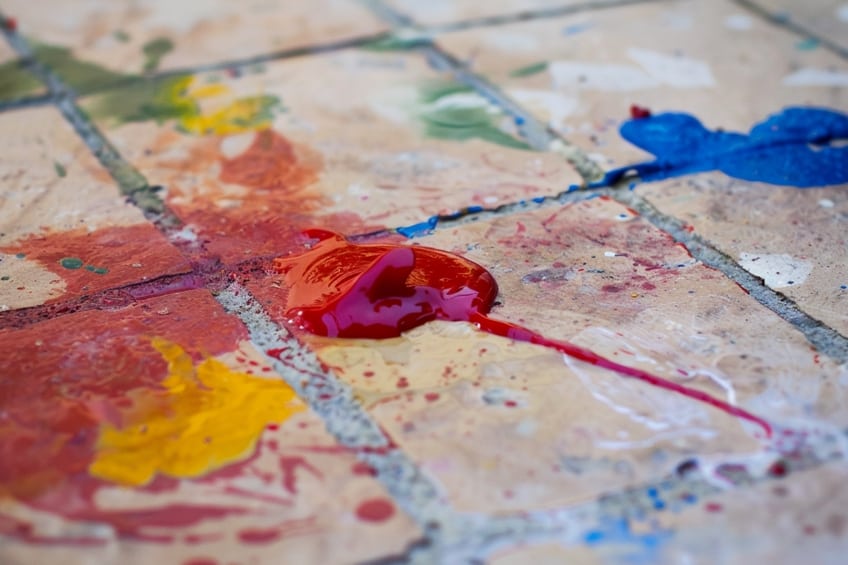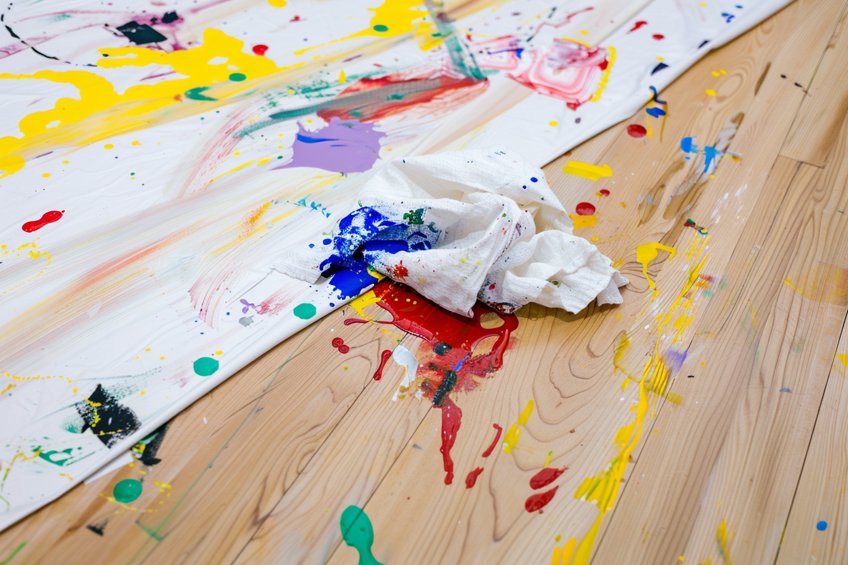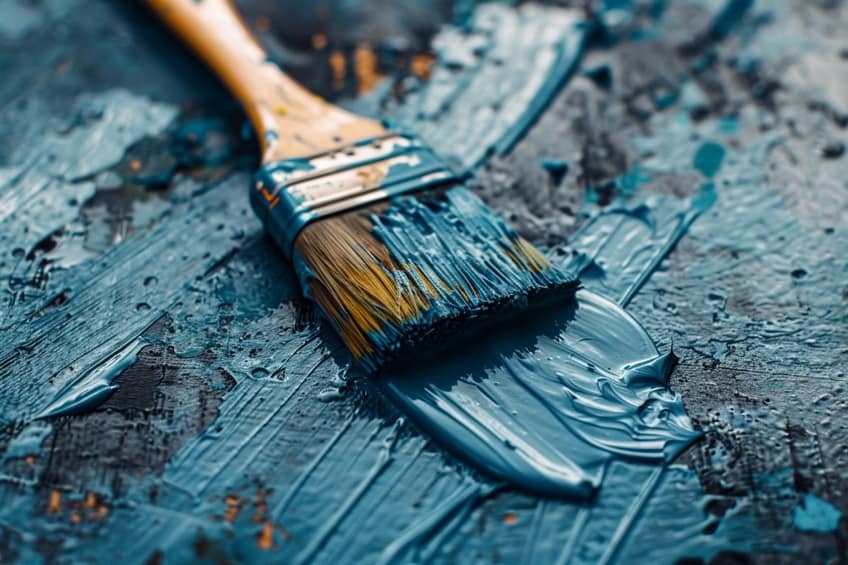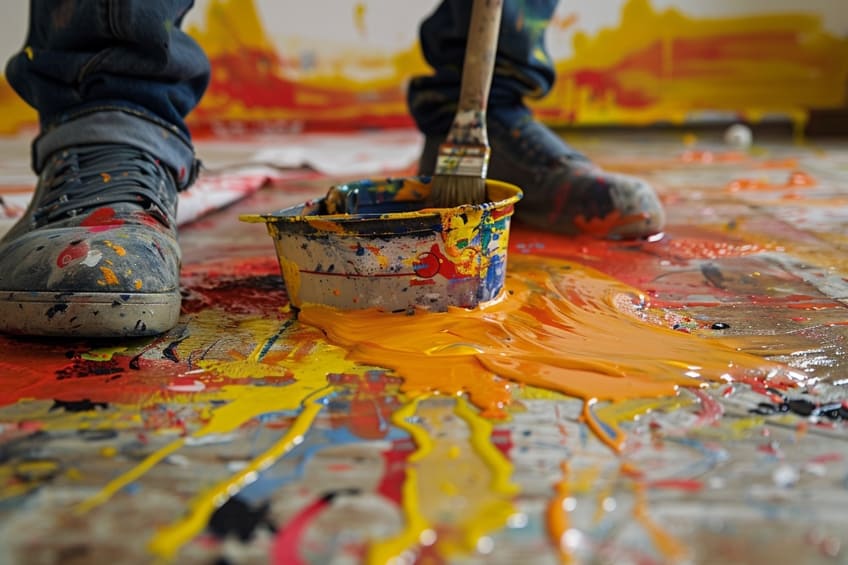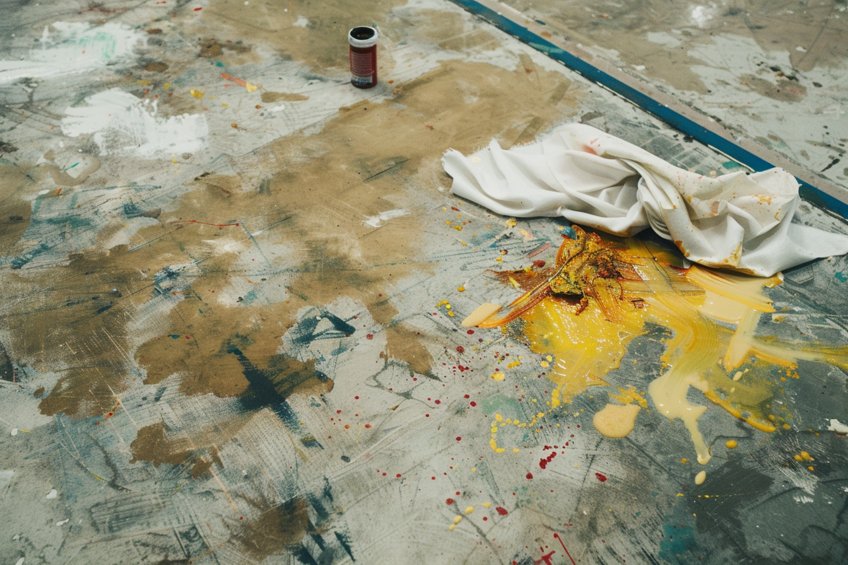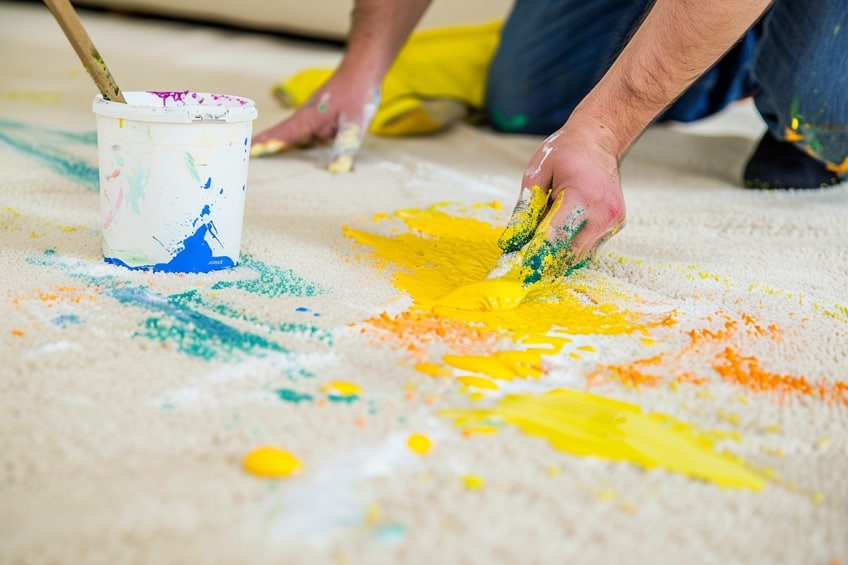How to Clean Up Spilled Paint – Quick and Effective Methods
This post may contain affiliate links. We may earn a small commission from purchases made through them, at no additional cost to you. You help to support resin-expert.com
Hey there, DIY enthusiasts and accidental artists! So, you’ve accidentally turned your living room into a Jackson Pollock masterpiece with a spilled paint fiasco? Don’t panic – we’ve all been there! Whether you’ve knocked over a can of cerulean blue or created an abstract canvas on your hardwood floor, fear not! In this article, we’ll unravel the mysteries of cleaning up spilled paint with simple tricks and a dash of creativity. So, grab your brushes (or paper towels), and let’s turn chaos into a masterpiece!
Table of Contents
Key Takeaways
- Act quickly to address paint spills for easier cleanup.
- Use surface-specific methods to remove paint without damage.
- Household items can often remedy fresh paint spills.
Preparation and Initial Steps
When dealing with paint spills, it is crucial to act swiftly to minimize damage and ease the cleanup process. The subsequent procedures will establish the groundwork for a proficient cleanup process.
Contain the Spill
One should immediately work to contain the paint spill to prevent it from spreading. For this, using absorbent material such as paper towels, old rags, or newspapers is highly effective. If the spill is on a hard surface, creating a barrier with these materials around the perimeter of the spill can help to keep the paint in one place. If the spill is wet paint, containment should be done gently to avoid further smearing.
Selecting the Appropriate Cleaner
When it comes to cleaning up spilled paint, selecting the appropriate cleaner hinges on various factors such as the paint’s state (wet or dry), its composition, and whether it is latex, oil-based, or another type. For wet paint spills, dealing with latex paint is often a breeze using warm water paired with a gentle detergent, while oil-based paints might demand a more targeted approach, necessitating specialized solvents like mineral spirits or turpentine. Understanding these distinctions ensures a swift and effective cleanup process tailored to the specific nature of the spill.
In cases of dry paint, one may need a paint scraper or a solution such as vinegar for latex paints or solvent-based cleaners for oil-based paints. Always use protective gear, like gloves, to safely handle the paint and cleaning agents.
Cleaning Techniques by Surface Type
When cleaning up spilled paint, the technique to use largely depends on the surface type. Each material requires a different approach to remove paint without causing damage. Below are specific methods tailored to various surfaces.
Wood
For wood surfaces, it’s imperative to promptly remove paint spills to prevent damaging the finish. Employ a plastic putty knife to delicately remove wet paint by scraping. In case the paint has dried, rubbing alcohol or a blend of dish soap and warm water can be utilized with a soft cloth to loosen the paint without causing damage to the wood.
Tile
Tile may resist paint better than wood, but care is still needed. Remove fresh spills with paper towels. For tougher stains or dried paint, apply warm, soapy water and gently scrub with a nylon brush, especially focusing on grout lines. Avoid abrasive materials that could scratch the tile.
Carpet
Removing paint from carpets can be challenging. Oil-based paint requires a solvent like paint thinner, while water-based or latex paint can occasionally be removed with warm water and dish soap. Gently blot or dab the stain; don’t rub to prevent spreading the paint deeper into the fibers.
Concrete
Concrete is porous, making clean-up tricky. For fresh spills, sawdust or cat litter can absorb wet paint. Once dried, a stiff brush and a soap and water mixture can help remove paint from the surface. For stubborn areas, a solvent or paint stripper might be necessary, followed by pressure washing.
Vinyl and Linoleum
With vinyl and linoleum, first, wipe away any wet paint. For dried splatters, a solution of vinegar or rubbing alcohol can assist in the removal. Prior to application, always perform a spot test to verify that the cleaner will not harm the finish.
Employ a damp cloth to administer the solution, and delicately rub away the paint.
Special Treatments
When dealing with paint spills, specialized treatments can be effective for removing paint from various surfaces, offering targeted solutions that minimize damage and streamline the cleanup process. Whether it’s hardwood floors, carpets, or fabrics, exploring tailored treatments ensures a successful restoration while preserving the integrity of the affected area.
- For synthetic carpets and fabrics: Acetone or nail polish remover can be carefully applied to a clean cloth and softly dabbed onto the stained area. Care should be taken with acetone as it can dissolve certain synthetic fibers.
- For delicate surfaces: Vegetable oil might be suitable for loosening paint, especially when dealing with latex-based paints. After application, it is important to wipe the surface gently, ensuring not to cause any harm to the underlying material.
- For stubborn splatters: WD-40 is known for its ability to break down the adherence of paint, particularly useful on splatters around seams or grout lines. It should be sprayed onto the affected area, allowed to sit, and then wiped clean.
- For hardened paint: A heat gun can help to soften paint, facilitating its removal process. This should be used with caution to prevent damage from excessive heat. Immediately after softening, one can use a plastic scraper to lift the paint.
- For spills on concrete: Denatured alcohol is effective for breaking down the paint without damaging the concrete. Apply with a cloth and scrub gently, using a brush for textured or uneven surfaces.
- For fresh spills: Sawdust can help absorb wet paint, simplifying the cleanup process. Once the sawdust has absorbed the paint, it can be swept away.
Using a spray bottle can help control the application of cleansing solutions, while a hose may be necessary to rinse off larger exterior surfaces. Before full application, it is advisable to test each treatment in an inconspicuous area to confirm compatibility with the surface.
Congratulations, you’ve successfully conquered the spilled paint monster! Through some effort and creative thinking, you’ve turned chaos into success. Keep in mind, mishaps occur, but armed with the proper knowledge, you can transform any mess into a work of art. So, next time you find yourself in a colorful conundrum, don’t fret – armed with these tips, you’re ready to tackle any paint spill like a DIY pro. Happy crafting and may your brushes always stay clean!
Frequently Asked Questions
What Is the Best Method for Cleaning Paint off Hardwood Floors?
For cleaning paint off hardwood floors, one should act quickly to prevent the paint from seeping into the wood grain. In the event the paint is wet, it ought to be gently blotted using a clean cloth or paper towel. If dry, one can gently scrape it off using a plastic putty knife, being careful not to scratch the surface. Then, you can apply a blend of warm water and gentle detergent to eliminate any remaining residue.
How Can I Remove Paint Spills from Carpets Effectively?
To effectively remove paint spills from carpets, it’s essential to first blot up as much paint as possible with a clean, absorbent cloth. After blotting, a cleaning solution of warm water and dish soap should be gently worked into the carpet fibers. For stubborn paint stains, a specialized carpet cleaner may be necessary. Once the paint is loosened, it should be blotted again until completely removed.
What Steps Should I Take to Clean Up a Large Paint Spill on Concrete?
To manage large paint spills on concrete, it’s advisable to first contain the spill to prevent further spreading. Absorbent materials such as cat litter or sawdust can then be utilized to cover and absorb the paint. Once absorbed, the material can be collected and disposed of properly. Any remaining paint residue can be cleaned with a solution of trisodium phosphate and water, scrubbed with a brush, and rinsed off with a hose.


